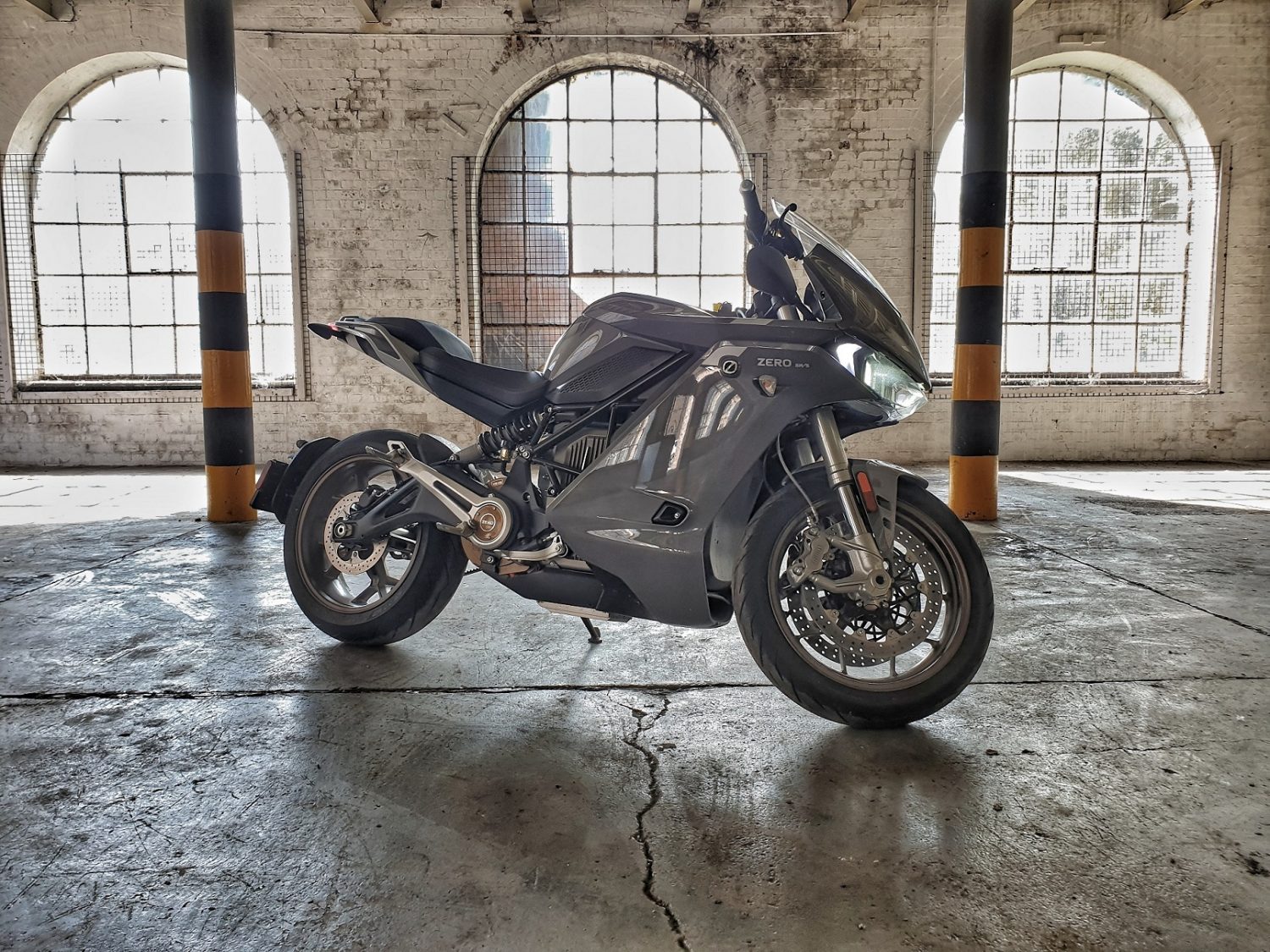Electric motorcycles; The future or the devil’s work? An inevitability or a passing phase?
Ever since I visited one of Europe’s largest electric motorcycle dealers, English Electric Motor Co, I have been hooked. They graciously facilitated my inauguration to electric motorcycles.
There is, however, no substitute for living with a bike, so Zero was kind enough to lend me their SRS press bikes for a while, to give me an opportunity to do a real-world review.
Zeros’ SRS is a fully electric motorcycle, like all of their bikes, and in the Zero stable, the SRS is the biggest, most expensive, most capable bike they make.
Let’s run through some statistics. This bike weighs 230kg, which is around 20kg heavier than a conventional ICE (Internal Combustion Engine) motorcycle. For example, the Suzuki GSX-S1000 is 209kg and the Yamaha MT10 is 210kg, not bad at all.
Power is deceptive and stated as 110bhp, which doesn’t sound like much. Don’t let this dampen your enthusiasm, rest assured you won’t be disappointed in the performance from this SRS. To add some perspective, a Ducati Panigale V4 makes 123Nm torque, the BMW 1000RR makes 100Nm torque. The Zero SRS make 190Nm of torque… yes… 190Nm!! Make no bones about it, in sport mode, this bike is seriously fast.
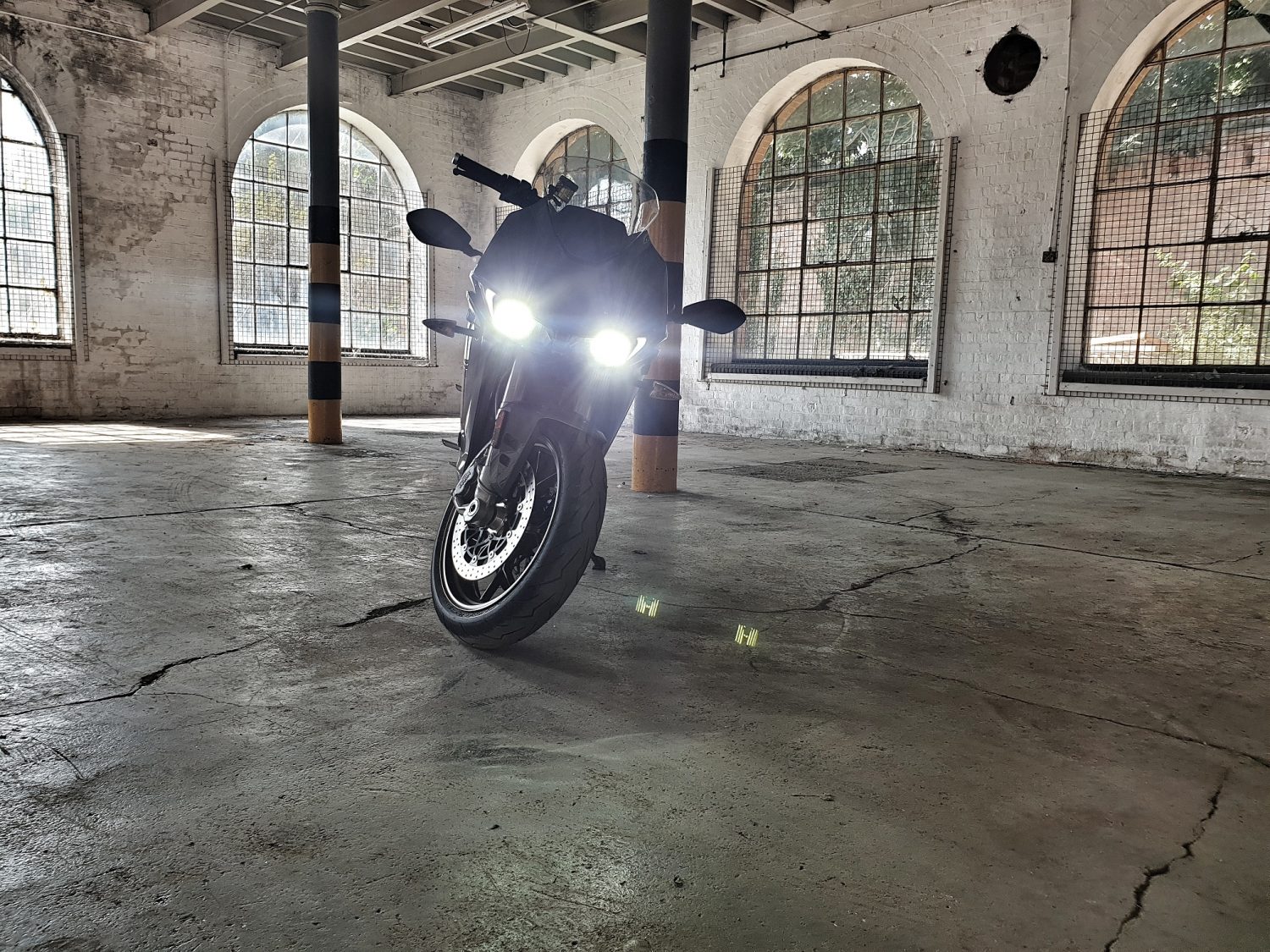
Bear in mind also that the power and torque from an electric motor are delivered in a different way to an ICE engine. On a traditional motorcycle, as revs build, generally power builds too. With an electric drivetrain, the power and torque are linear, meaning you have very strong power available from the moment you twist the throttle if you want it.
Interestingly, it carries its weight quite low. Most of the weight is in the battery and motor, which is all below your knees. What would be the fuel tank on an ICE bike, is the storage box for the charging cable on the SRS.
Let’s talk about range. It’s usually one of the first questions people ask about electric motorcycles generally. It’s actually really hard to answer. This isn’t an excuse or me trying not to answer. There are a lot of factors that affect the range, such as temperature, riding style, type of roads and more. Batteries perform worse in hot weather for example and if you ride aggressively and in sport mode all the time, your range will suffer. The same applies to sustained high speeds such as motorways or dual carriageways, where the constant draw on the battery takes a toll on the range.
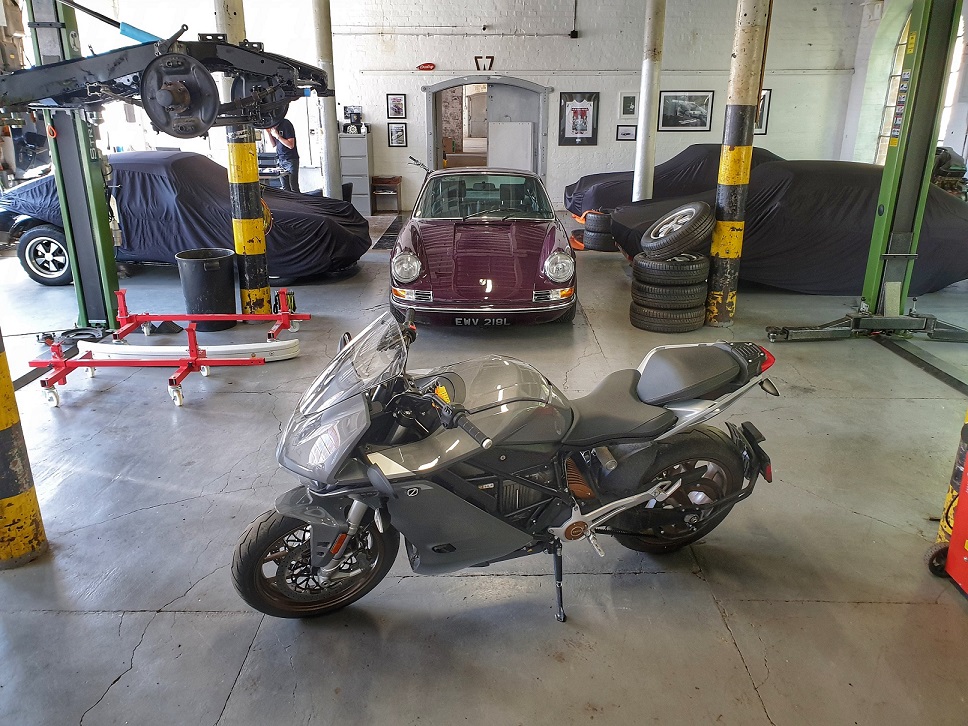
When I first collected the bike, I inevitably selected sport mode and spanked it for a few miles, quickly discovering the negative impact this had on the range. Fast forward a few days and by riding a bit more carefully, switching modes to soften the power and regenerate electricity in traffic, I could easily see 110 miles+ on a mix of roads.
Talking about rider modes, there are 5 on the SRS. You have the full-fat Sport mode which lets you have all of the power with reduced regenerative braking. You still have ABS and traction control though (which is a good thing). Next is Street mode, which offers slightly reduced power and increased regenerative braking. This mode is great for general riding. Next is Eco mode which restricts power and offers maximum regenerative braking. Top speed is restricted to 75mph. I use this is traffic to extend the range when there’s no point in using street or sport modes. There is also a rain mode which has the softest power delivery and least amount of regenerative braking. Rain mode is designed for low traction conditions.
Lastly, there is Custom mode. This is a mode that you can personalise, for example, maximum power with increased regenerative braking. You can also rename it. The team at English Electric Motor Co customised theirs and called it Beast mode.
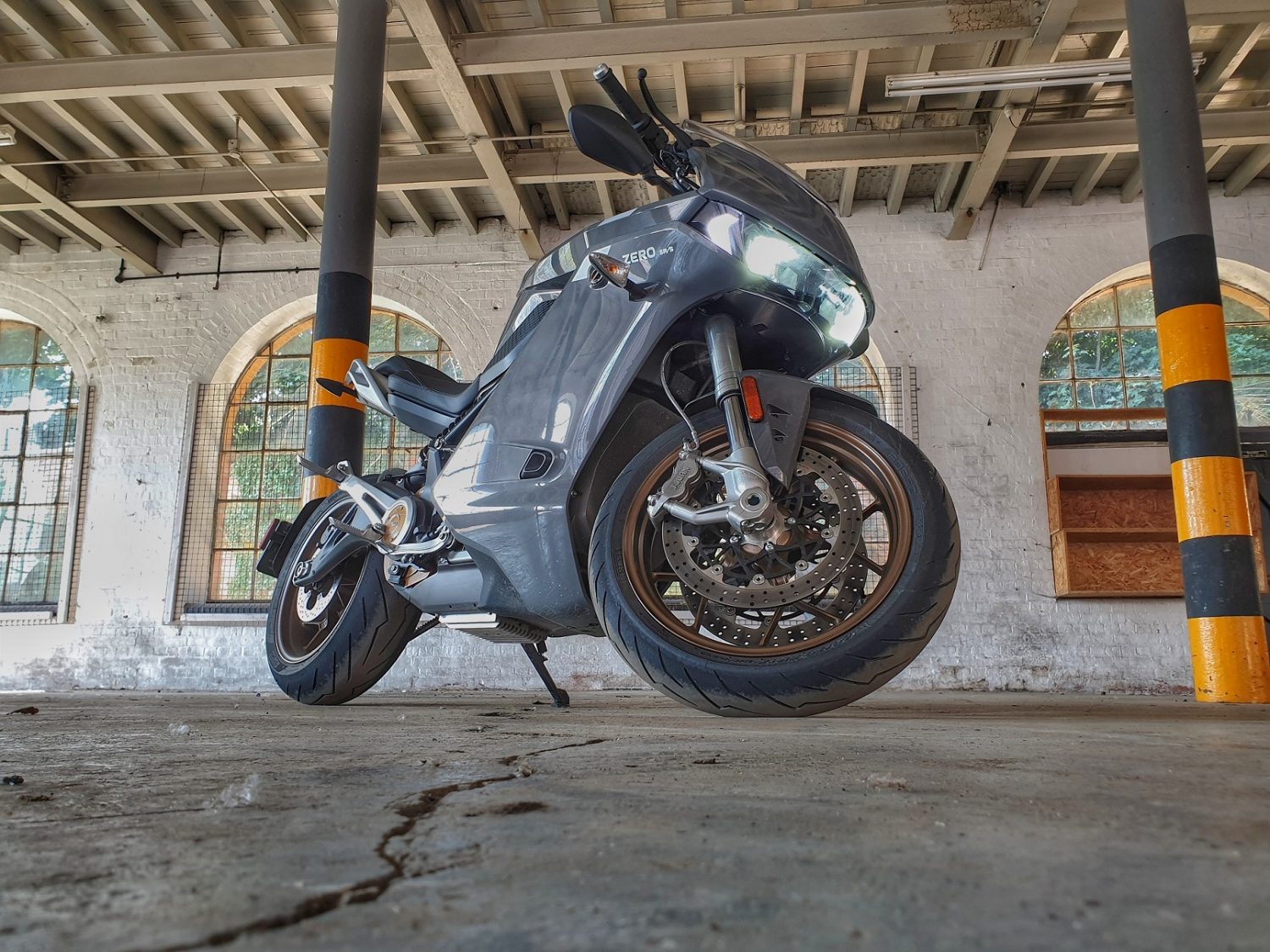
Zero have taken a fairly traditional approach to styling on the SRS. They could have taken a more radical, futuristic approach, but I really like it, it looks great. There are some neat touches like the mirrors. They are mounted low on the fairing below the handlebars and actually look under your arms. It sounds odd but they are very effective. Quality of components is construction is outstanding. The bike is excellent and feels very premium and it’s the easiest bike to ride. Controls are absolute simplicity with no clutch, no gears and just brakes and throttle. The throttle is progressive and very smooth.
Handling is superb, this thing corners so hard. It’s a little short, but I like that, it helps to deal with the poor condition of our roads. The suspension is fully adjustable Showa front and rear and brakes are J-Juan radial callipers and are excellent.
“How long does it take to charge?” is another common question. Let’s do some man maths. The battery is 14.4kwh. Think of it as a fuel tank. If you charge up from a domestic 3 pin plug, you will see a charging rate of 2.3kwh. That means that every hour, 2.3kwh flows into the 14.4kwh battery, simple. Think of kwh as litres if you like. If the battery was empty, on a 3 pin plug it would take just over 6 hours to fully charge, which you would typically do at night when the electricity is cheap.
The maximum rate you can charge the battery is 6.6kwh on a type 2 fast charger such as the ones at supermarkets, shopping centres and fast-food restaurants. This means, if it was completely empty and you used any fast charger, regardless of the rating, it would charge the SRS at 6.6kwh and it would fully charge in just over 2 hours.
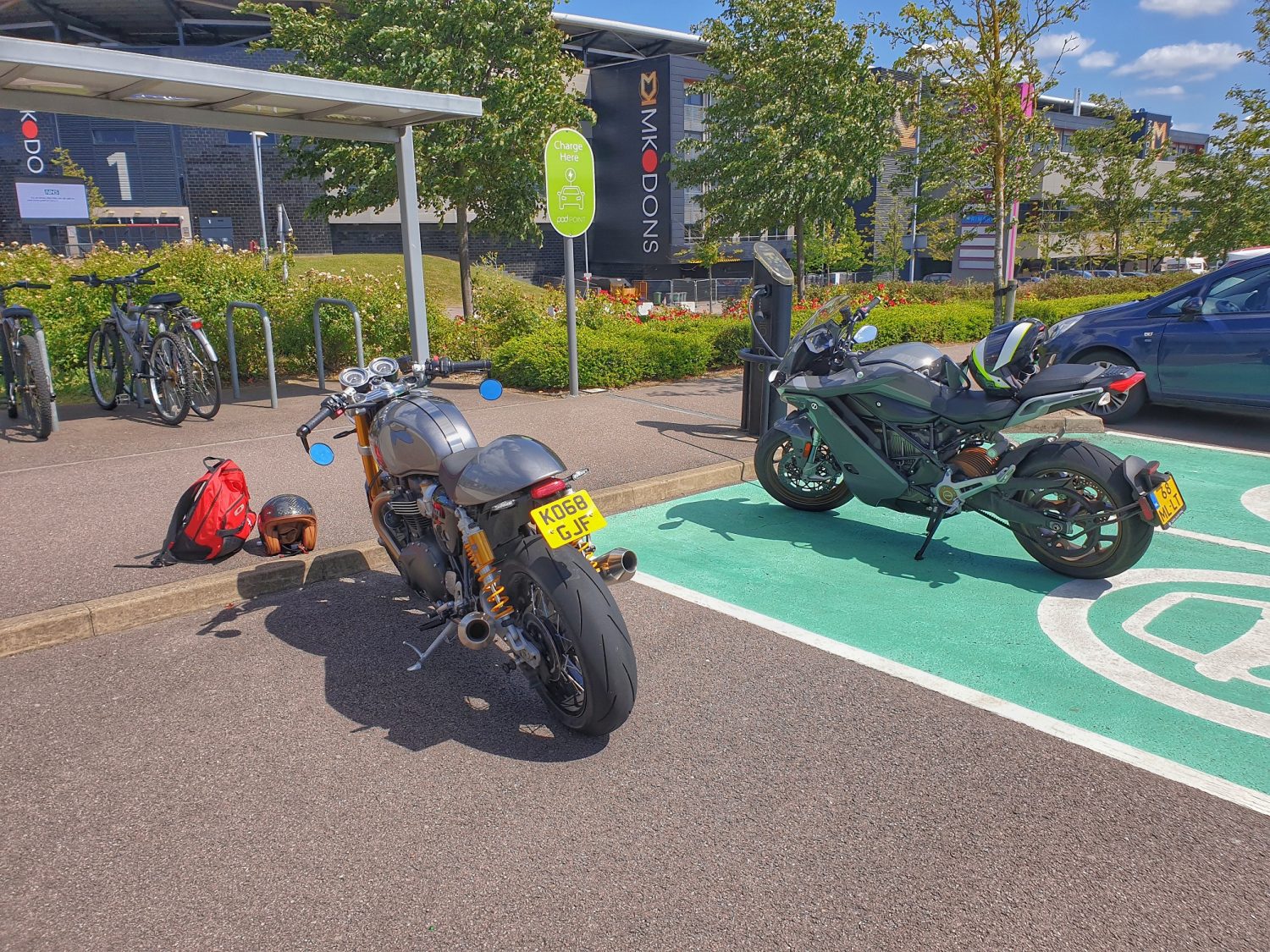
In reality, it is unlikely that people will fully charge ‘on the go’, but instead, maybe top-up.
On one of my rides, I stopped at a shopping centre in Milton Keynes and topped up for 30 odd minutes. In that time I increased the battery charge by 20%. It was simple and free.
Another big bonus of running an electric motorcycle is running costs. At home, you will probably pay something like 6p/kWh for your electricity. Let’s say 10p for the sake of man maths. If you charge at home, from a 3 pin plug, at night, a 14.4kwh battery will cost £1.44 to charge. Even better, if you charge at a shopping centre or McDonald’s on a fast charger, it’s usually free.
In addition to the minimal running costs, servicing is a far more economical affair. Remember, electric drivetrains are simplicity themselves. Very few moving parts, just an electric motor. No gearbox, no complicated engine with hundreds of moving parts. Servicing tends to be consumables such as brakes, tyres, drive belt and so on. The battery has a 5-year warranty and after that, is expected to last the lifetime of the motorcycle if looked after correctly.
To sum things up, the Zero SRS really is a great motorcycle. It is outrageous if you want it to be, or it can be a pussycat. It’s incredibly easy to ride and very well built. It’s pretty practical but not suitable for everyone. I love it and am very pleased to have had the time to get to know it.

